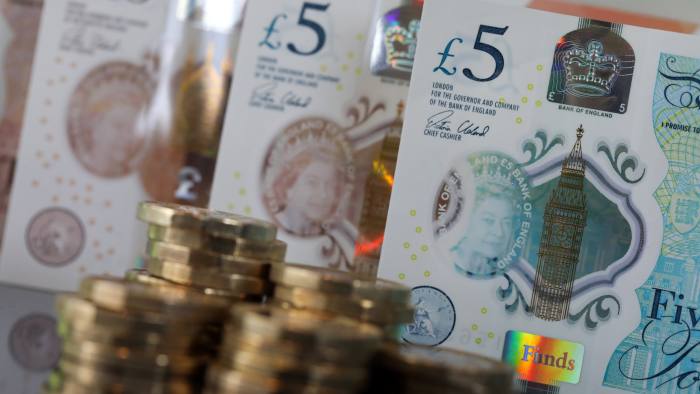The British sterling fell towards its lowest levels in more than two years on Tuesday against the backdrop of a worsening economic outlook and rising fears about a no-deal Brexit under a new Prime Minister.
With a key $1.25 level against the dollar giving way in early Asian trade, traders quickly pushed the British currency down half a percent against the dollar to a level not seen since April 2017, barring a flash crash in early January.
The pound also weakened against the euro to a six-month low at 89.95 pence and is on track for a tenth consecutive week of losses against the single currency.
“All the fundamental factors point to a weaker pound and the downward momentum is still intact,” said Lee Hardman, a currency strategist at MUFG in London.
In the latest sign of economic weakness, sales at British retailers rose at their slowest average pace on record over the past year, a survey from the British Retail Consortium showed on Tuesday.
Concerns about the worsening economic outlook in Britain – some analysts expect the economy contracted in the second quarter – encouraged Bank of England Governor Mark Carney to signal last week that the central bank may strike a more dovish tone at its August policy meeting.
The pound was trading 0.5% down versus the dollar at $1.2455 and within striking distance of an April 2017 low below $1.2409. It very briefly hit that low in January this year in chaotic trading during a currency market flash crash.
Volatile Outlook
Markets are now pricing in a BoE rate cut over the next 12 months, as central banks around the world adopt an easing bias in the face of economic uncertainty and trade tensions between the United States and China.
Sterling has fallen for several days, its losses compounded by a dollar rallying after analysts scaled back expectations the Federal Reserve would cut interest rates by 50 basis points later this month.
RBC Capital Markets strategist Adam Cole noted that betting markets were now pricing in a 95% chance of eurosceptic Boris Johnson, who some investors fear will push Britain towards a no-deal Brexit, becoming the next leader of the Conservative party and Prime Minister.
“While a significant measure of Brexit risks have already been priced, the pound may still have more of its downside exposed, should the prospect of a no-deal Brexit ramp up meaningfully over the coming months,” said Han Tan, Market Analyst at FXTM.
Those risks are being priced into the currency derivative markets with the spread between three and six-month implied volatility in the pound widening to its highest levels in two months.
Latest headlines on the Brexit front have also pressured the pound lower.
Ireland will step up its preparations for a disorderly Brexit this week given the chances of Britain leaving the European Union without a deal have never been higher, foreign minister Simon Coveney said.
A spat between Britain and the United States following the leak to a British newspaper on Sunday of memos from the British ambassador to Washington also raised concerns.
Option markets also point to more weakness in the pound with only some relatively tiny options amounting to around $400 million struck around the $1.24 levels.
Economic growth data for May, due on Wednesday, will help analysts decide whether the British economy is likely to have shrunk in the second quarter after a series of disappointing business surveys.
Economists polled by Reuters expect the British economy grew 0.3% in May month-on-month, an improvement on the -0.4% in April.














